LDR BASICS
Electronic optosensors are devices that alter their electrical characteristics in the presence of visible or invisible light. The best known devices of these types are the LDR (light dependent resistor), the photodiode, the phototransistor, and the PIR (passive infrared) detector.
LDR operation relies on the fact that the conductive resistance of a film of cadmium sulphide (CdS) varies with the intensity of light falling on the face of the film. This resistance is very high under dark conditions and low under bright conditions.
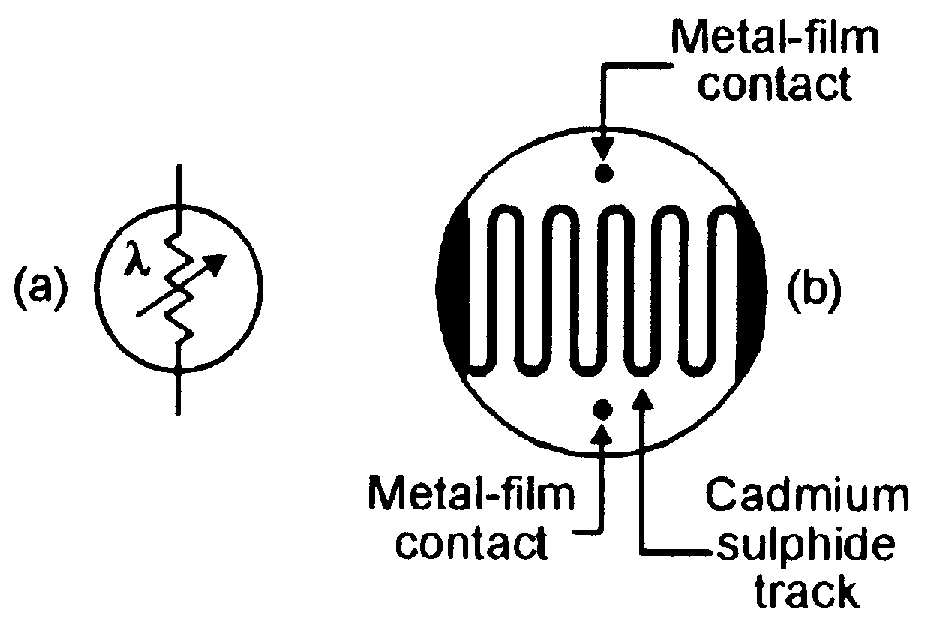
FIGURE 1. LDR symbol (a) and basic structure (b).
Figure 1 shows the LDR’s circuit symbol and basic construction, which consists of a pair of metal film contacts separated by a snake-like track of light-sensitive cadmium sulphide film, which is designed to provide the maximum possible contact area with the two metal films. The structure is housed in a clear plastic or resin case, to provide free access to external light.
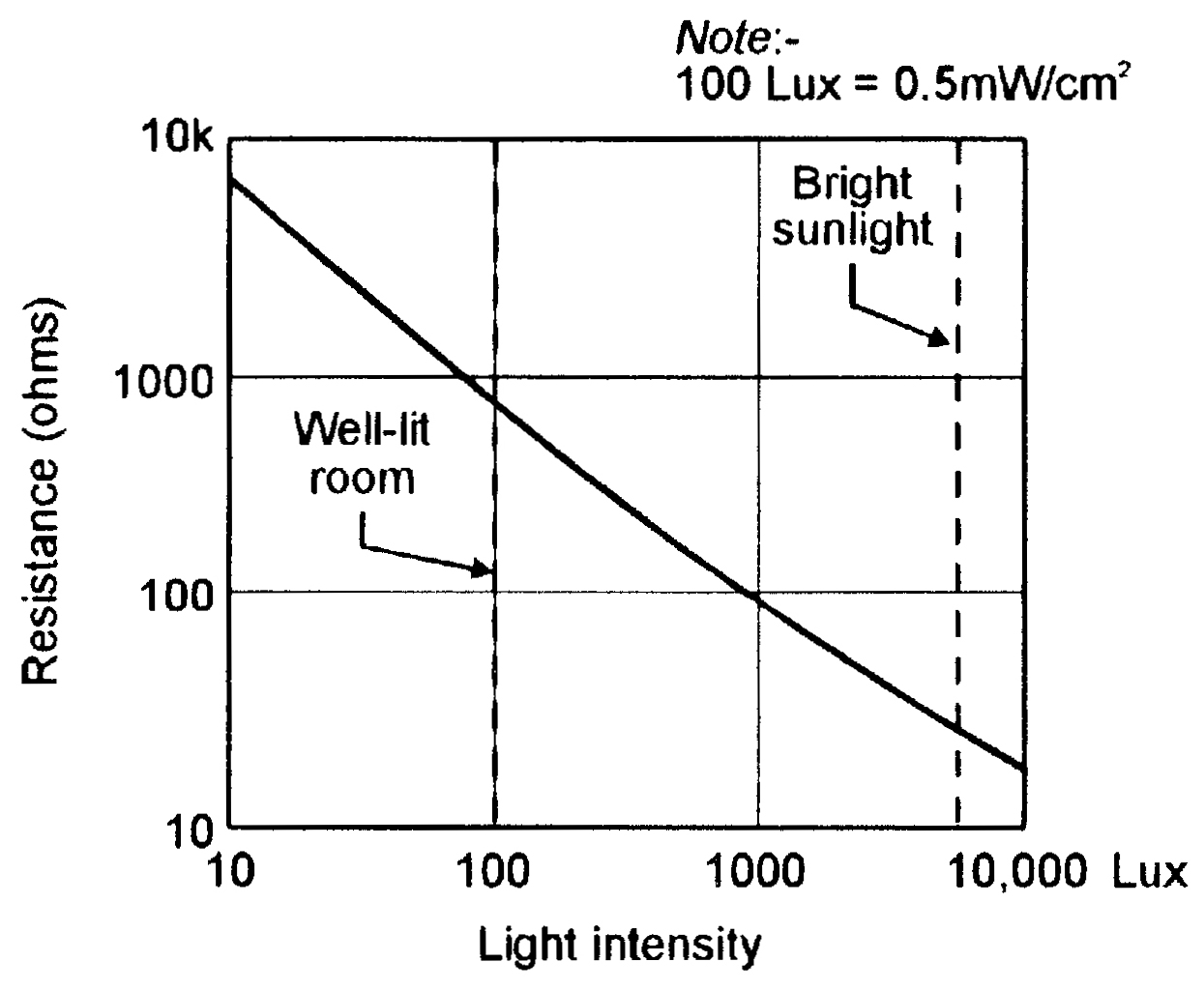
FIGURE 2. Typical characteristics curve of a LDR with a 10 mm face diameter.
Practical LDRs are available in a variety of sizes and package styles, the most popular size having a face diameter of roughly 10mm. Figure 2 shows the typical characteristic curve of such a device, which has a resistance of about 900R at a light intensity of 100 Lux (typical of a well-lit room) or about 30R at an intensity of 8000 Lux (typical of bright sunlight). The resistance rises to several megohms under dark conditions.
LDRs are sensitive, inexpensive, and readily available devices with power and voltage handling capabilities similar to those of conventional resistors. Their only significant defect is that they are fairly slow acting, taking tens or hundreds of milliseconds to respond to sudden changes in light level.
Useful LDR applications include light- and dark-activated switches and alarms, and Figures 3 to 9 show some practical circuits of these types; each of these circuits will work with virtually any LDR with a face diameter in the range of 3mm to 12mm.
LDR LIGHT-SWITCHES
Figures 3 to 5 show some practical relay-output light-activated switch circuits based on the LDR. Figure 3 shows a simple non-latching circuit, designed to activate when light enters a normally-dark area, such as the inside of a safe or cabinet, etc.

FIGURE 3. Simple non-latching light-activated relay switch.
Here, R1-LDR and R2 form a potential divider that controls the base-bias of Q1. Under dark conditions, the LDR resistance is very high, so negligible base-bias is applied to Q1, and Q1 and RLA are off. When a significant amount of light falls on the LDR face, the LDR resistance falls to a fairly low value and base-bias is applied to Q1, which thus turns on and activates the RLA/1 relay contacts, which can be used to control external circuitry. The relay can be any 12V type with a coil resistance of 180R or greater.
The simple Figure 3 circuit has a fairly low sensitivity, has no facility for sensitivity adjustment, and its light trigger points vary with variations in circuit supply voltage and ambient temperature. Figure 4 shows a very sensitive, precision light-activated circuit that suffers from none of these weaknesses.
Here, LDR-RV1 and R1-R2 are connected in the form of a Wheatstone bridge, and the op-amp and Q1-RLA act as a sensitive balance-detecting switch. The bridge balance point is quite independent of variations in supply voltage and temperature, and is influenced only by variations in the relative values of the bridge components.
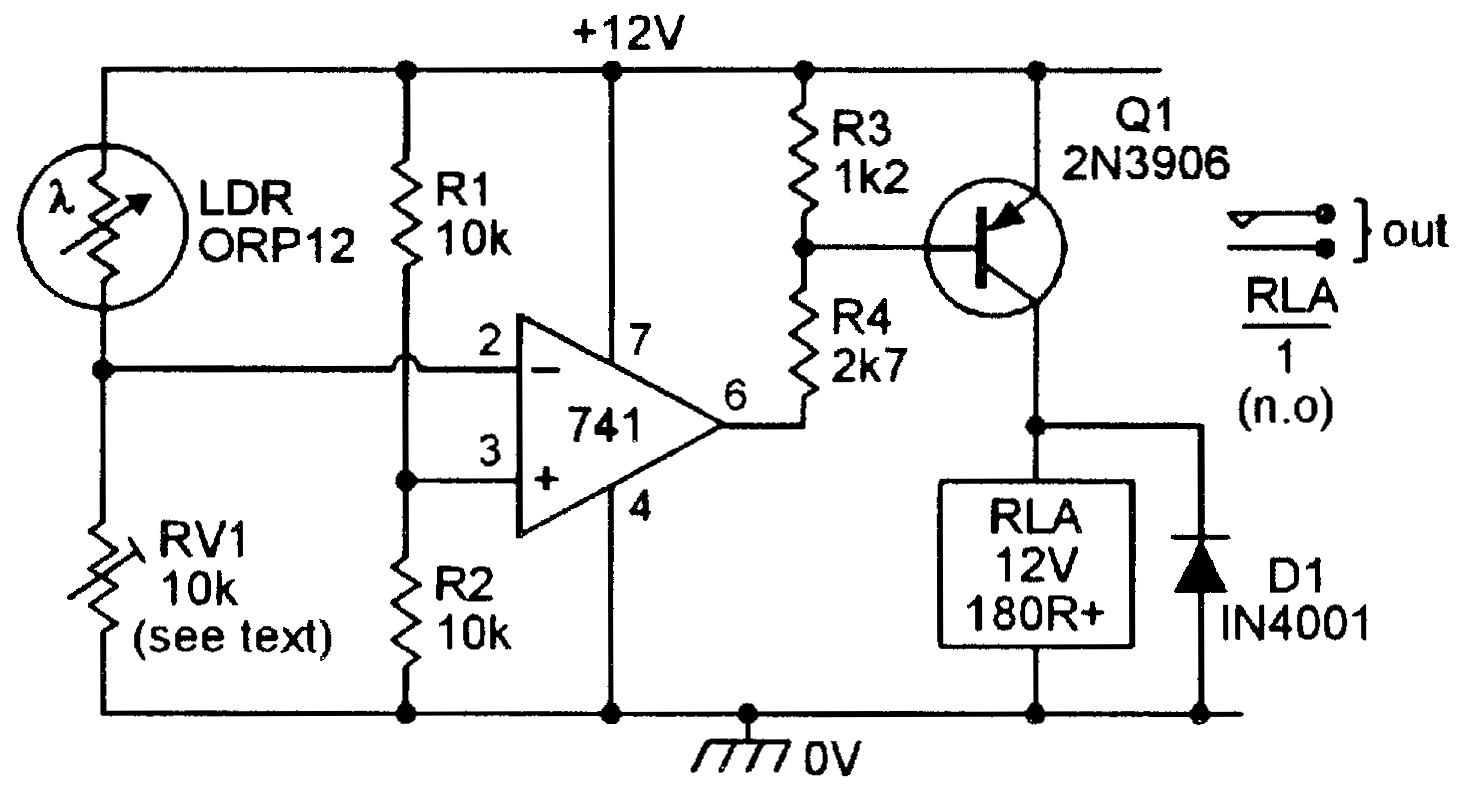
FIGURE 4. Precision light-sensitive relay switch.
In Figure 4, the LDR and RV1 form one arm of the bridge, and R1-R2 form the other arm. These arms act as potential dividers, with the R1-R2 arm applying a fixed half-supply voltage to the non-inverting input of the op-amp, and with the LDR-RV1 divider applying a light-dependent variable voltage to the inverting terminal of the op-amp.
In use, RV1 is adjusted so that the LDR-RV1 voltage rises slightly above that of R1-R2 as the light intensity rises to the desired trigger level and, under this condition, the op-amp output switches to negative saturation and drives the relay on via Q1 and biasing resistors R3-R4.
When the light intensity falls below this level, the op-amp output switches to positive saturation and, under this condition, Q1 and the relay are off.
The Figure 4 circuit is very sensitive and can detect light-level changes too small to be seen by the human eye. The circuit can be modified to act as a precision dark-activated switch by either transposing the inverting and non-inverting input terminals of the op-amp, or by transposing RV1 and the LDR.
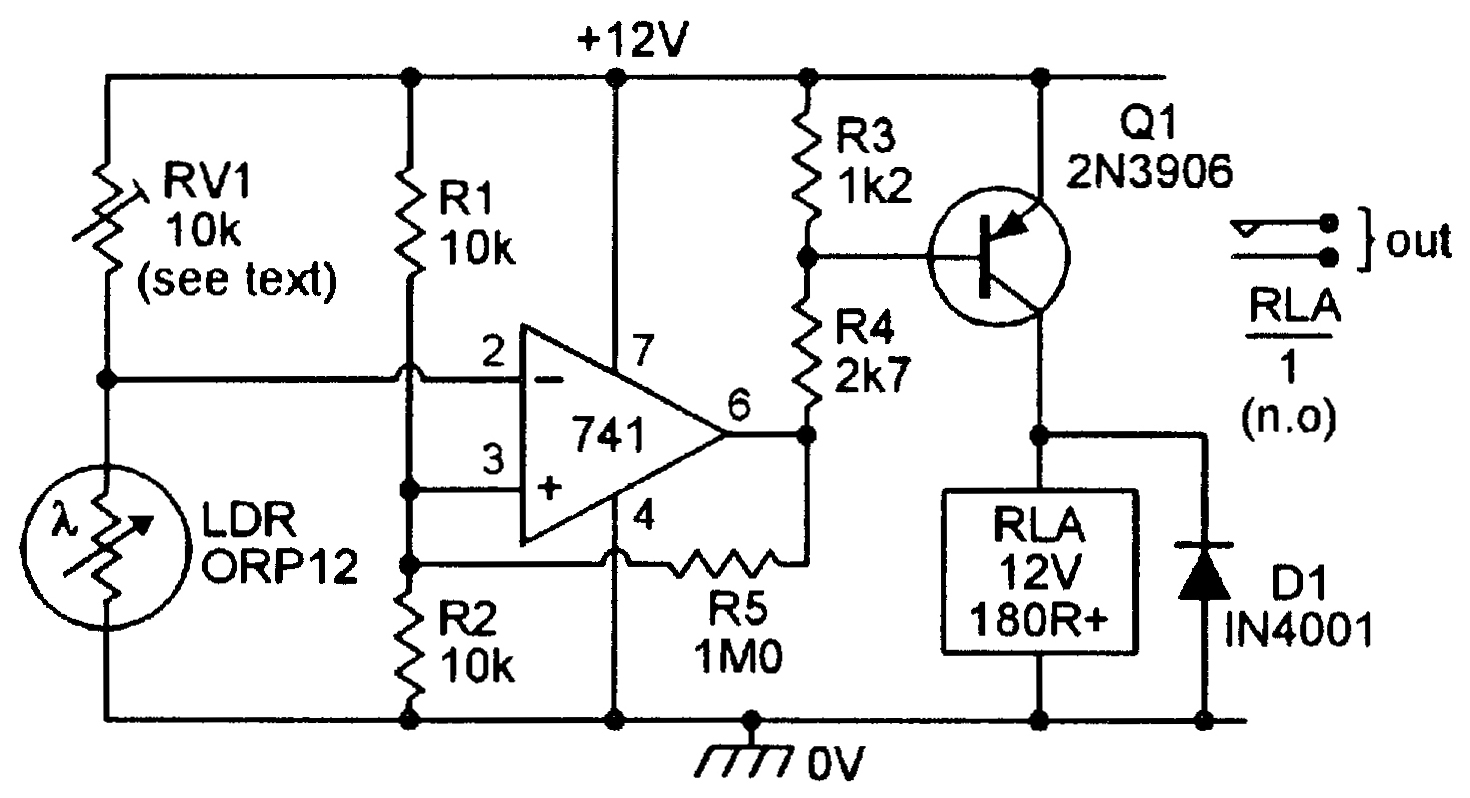
FIGURE 5. Precision dark-activated switch, with hysteresis.
Figure 5 shows a circuit using the latter option; this circuit also shows how a small amount of hysteresis can be added to the circuit via feedback resistor R5, so that the relay turns on when the light level falls to a particular value, but does not turn off again until the light intensity rises a substantial amount above this value. The magnitude of hysteresis is inversely proportional to the R5 value, being zero when R5 is open circuit.
A BELL-OUTPUT LDR ALARM
The Figure 3 to 5 light-activated LDR circuits all have relay outputs that can be used to control virtually any type of external circuitry. In some light-activated applications, however, circuits are required to act as audible-output alarms, with a bell or siren-sound output, and this type of action can be obtained without the use of relays.

FIGURE 6. Precision light-activated alarm bell.
Figure 6 shows a practical ‘alarm bell output’ circuit that gives a direct output to an alarm bell, which must be of the self-interrupting type that consumes an operating current of less than 2A. The circuit’s supply voltage should be 1.5V to 2V greater than the nominal operating value of the bell.
The Figure 6 circuit uses a Wheatstone bridge (LDR-RV1-R1-R2) and an op-amp balance detector to give the precision sensing/switching action (as described in the basic Figure 4 circuit), but its output drives the alarm bell via an inexpensive SCR; the basic circuit can be converted into a dark-activated alarm by simply transposing RV1 and the LDR; hysteresis can also be added, if required.
Note in the Figure 6 circuit that, although the SCR is a self-latching device, the fact that the bell is of the self-interrupting type ensures that the SCR automatically unlatches repeatedly as the bell operates (and the SCR anode current falls to zero in each self-interrupt phase). Consequently, the alarm bell automatically turns off again when the light level falls back below the trip level.
SIREN-OUTPUT LDR ALARMS
Figures 7 to 9 show ways of using CMOS 4001B quad two-input NOR gate ICs as the basis of various light-activated ‘siren-sound’ alarms that generate audible outputs in loudspeakers.

FIGURE 7. Light-activated alarm with pulsed-tone output.
The Figure 7 circuit is that of a light-activated alarm that generates a low-power (up to 520mW) 800Hz pulsed-tone signal in the speaker when the light input exceeds a pre-set threshold value.
Here, IC1c and IC1d are wired as a 800Hz astable multivibrator that can feed tone signals into the speaker via Q1 and is gated on only when the output of IC1b is low, and IC1a-IC1b are wired as a 6Hz astable that is gated on only when its pin-1 gate terminal (which is coupled to the LDR-RV1 potential divider) is pulled low.
The action of the Figure 7 circuit is as follows. Under dark conditions, the LDR-RV1 junction voltage is high, so both astables are disabled and no signal is generated in the speaker. Under ‘light’ conditions, the LDR-RV1 junction voltage is low, so the 6Hz astable is activated and, in turn, gates the 800Hz astable on and off at a 6Hz rate, thereby generating a pulsed-tone signal in the speaker via Q1.
The precise switching or gate point of the 4001B IC is determined by the threshold voltage value of the IC, and this is a percentage value of the supply voltage: the value is nominally 50%, but may vary from 30% to 70% between individual ICs. In practice, the switching point of each individual 4001B IC is very stable, and the Figure 7 circuit gives very sensitive ‘light’-activated alarm triggering.
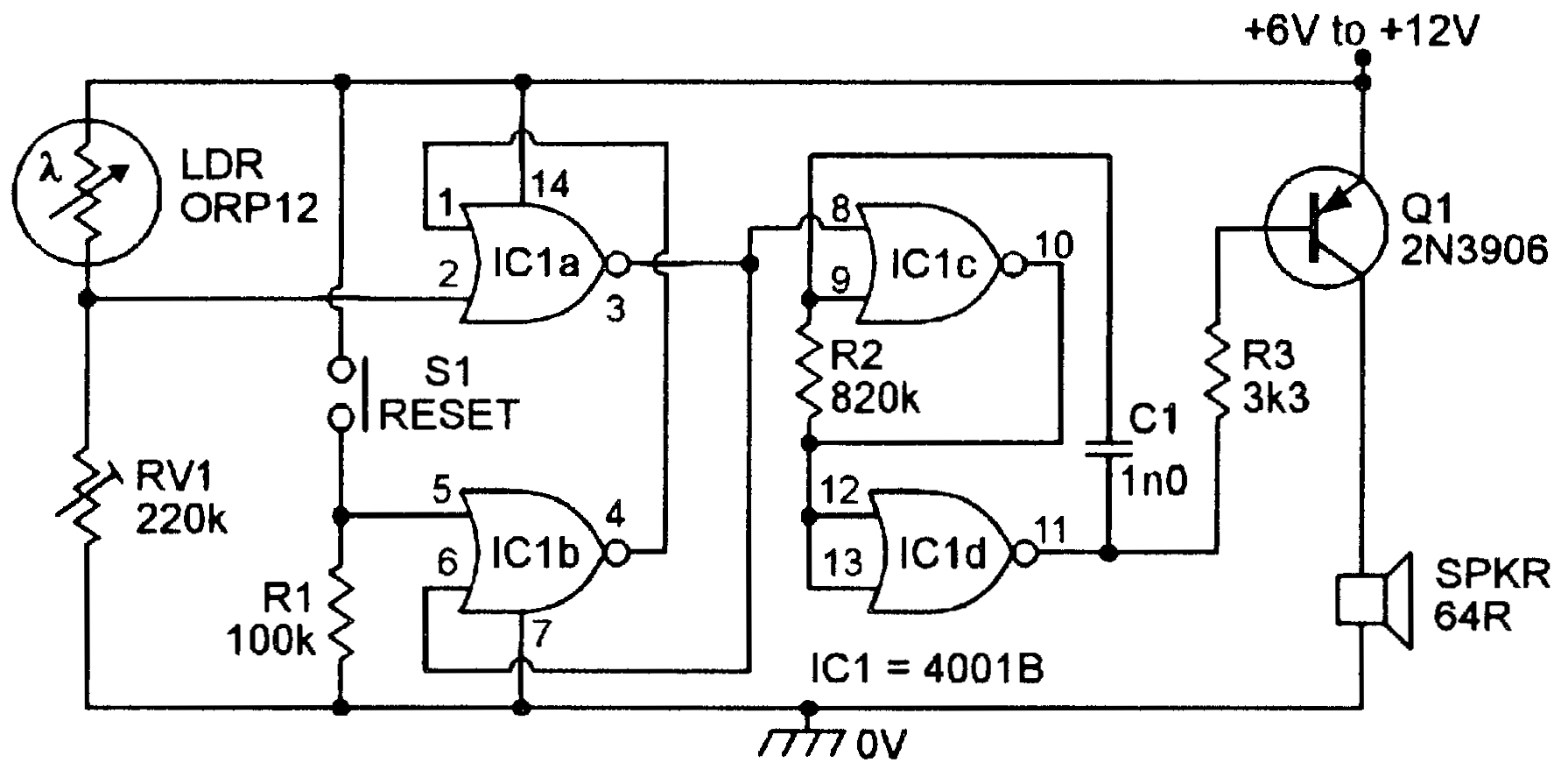
FIGURE 8. Self-latching light-activated alarm with monotone output.
Figure 8 shows the circuit of a self-latching, light-activated alarm with an 800Hz monotone output. In this case, IC1c-IC1d are again wired as a gated 800Hz astable, but IC1a-IC1b are wired as a bistable multivibrator with an output that (under dark conditions) is normally high, thus gating the 800Hz astable off.
Under bright conditions, however, the LDR-RV1 junction goes high and latches the bistable into its alternative ‘output low’ state, thereby gating the 800Hz astable on and generating the monotone alarm signal; once latched, the circuit remains in this ‘on’ state until dark conditions return and the bistable is simultaneously reset via S1.
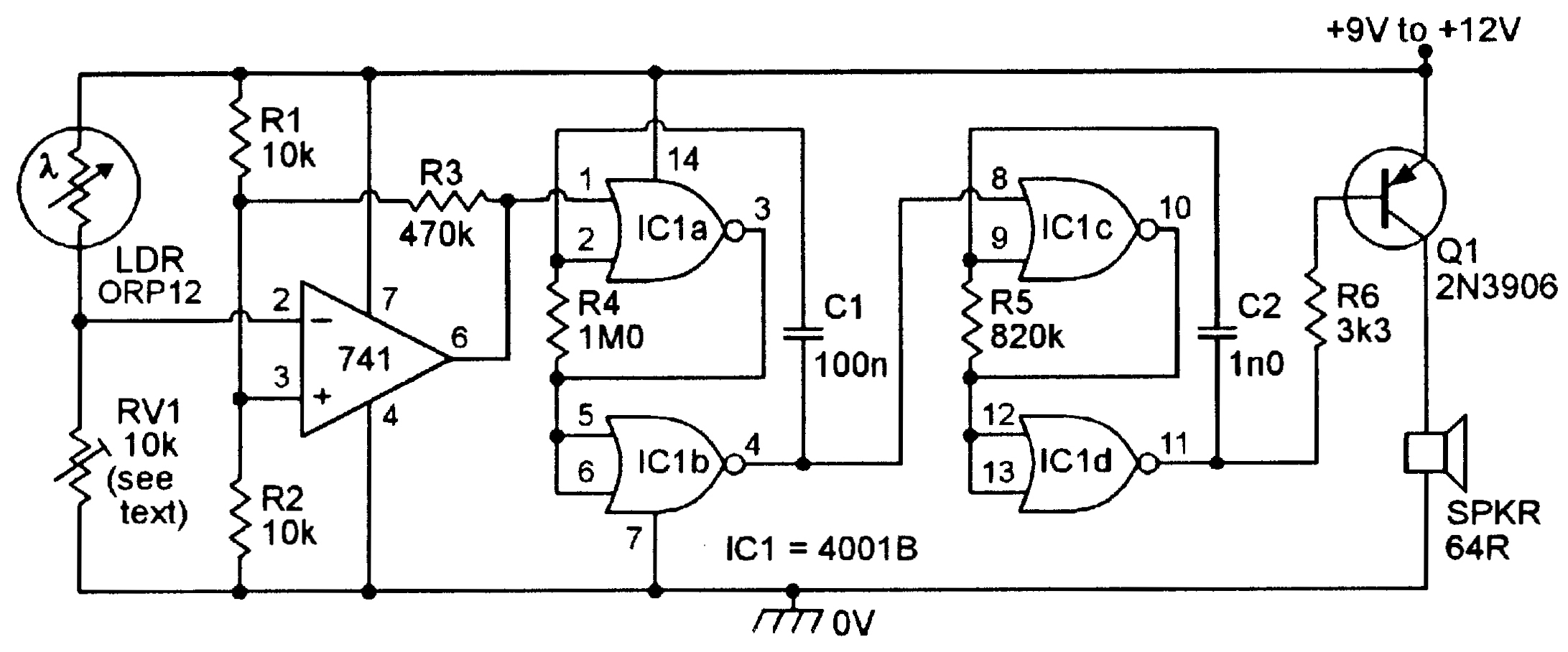
FIGURE 9. Precision light-activated pulsed-tone alarm with hysteresis.
Note that the light/dark operation of the Figure 7 and 8 circuits can be reversed by simply transposing the LDR-RV1 positions. The sensitivity levels of these two basic circuits are adequate for most practical purposes, but can, if required, be boosted (and the trigger-level stability increased), by interposing an op-amp voltage comparator (of the basic Figure 4 or 5 type) between the LDR-RV1 light-sensitive potential divider and the gate terminal of the CMOS waveform generator, as shown in the Figure 9 circuit; resistor R3 controls the hysteresis of the circuit, and can be removed if the hysteresis is not needed.
The Figure 7 to 9 circuits generate fairly modest values of acoustic output power, with the power input to the 64-ohm loudspeaker reaching a maximum value of 520mW when using a 12V supply. The available output power can, however, easily be boosted by feeding the circuit’s output to low-impedance horn-type loudspeakers via simple power-boosting amplifiers.
PHOTODIODES
Cadmium sulphide (CdS) LDRs are sensitive but slow-acting devices. They are ideal for use in slow-acting, direct-coupled light-level sensing applications, but are not suitable for use as optical sensors in medium- to high-speed applications. The ideal optical sensors for use in the latter applications are the silicon photodiode and the silicon phototransistor.

FIGURE 10. Reverse-biased diode circuit.
In its very crudest form, a photodiode is a normal silicon diode minus its opaque (light-excluding) covering. If a normal silicon diode is connected in the reverse-biased circuit of Figure 10, negligible current flows through the diode and zero voltage is developed across R1.
If the diode’s opaque covering is now removed (so that the diode’s semiconductor junction is revealed) and the junction is then exposed to visible light in the same circuit, the diode will pass a significant reverse current and thus generate an output voltage across R1.
The magnitude of the reverse current and the output voltage is directly proportional to the intensity of the light source, and the diode is thus truly photosensitive.

FIGURE 11. Photodiode symbol (a) and alternative ways ((b) and (c)) of using a photodiode as a light-to-voltage converter.
All silicon junctions are photosensitive, and a basic photodiode can — for most practical purposes — be regarded as a normal diode housed in a case that lets external light easily reach its photosensitive semiconductor junction. Figure 11(a) shows the standard photodiode symbol.
In use, the photodiode is reverse-biased and the output voltage is taken from across a series-connected load resistor; this resistor can be connected between the diode and ground, as in Figure 11(b), or between the diode and the positive supply line, as in Figure 11(c).
In reality, the physical form of a normal silicon diode’s pn junction is such that the device exhibits fairly low optical sensitivity; all practical photodiodes use special types of junction design, to maximize their effective photosensitivity. Most photodiodes come in one or the other of two basic types, being either ‘simple’ photodiodes or PIN photodiodes. Figure 12 illustrates some basic points on these subjects.

FIGURE 12. Symbol and basic construction of (a) a normal silicon junction diode, (b) a simple photodiode, and (c) a PIN photodiode.
Normal silicon junction diodes use the basic form of construction shown (in symbolic form) in Figure 12(a), in which the device’s p- and n-type materials are moderately thick (and thus fairly opaque), and are effectively fused directly together to form the device’s junction; the relatively high opacity of the pn junction’s materials gives the junction fairly poor photosensitivity.
In a simple photodiode, the photosensitivity is greatly increased by using a very thin (and thus highly translucent) slice of material on the p-type side of the junction, as shown in Figure 12(b); external light can be applied, via a built-in lens or window, to the opto-sensitive pn
junction via this thin slice of p-type material.
Simple Figure 12(b)-type photodiodes have minimum on/off switching times of about 1µS, and can thus be used at maximum pulsed or switched operating frequencies of about 300kHz.
The prime cause of this relatively long switching time is the high capacitance that occurs at the device’s junction, between the p- and n-type materials. This problem is greatly reduced in PIN photodiodes, in which a very thin slice of intrinsic (‘I’) or ‘undoped’ silicon material is interposed at the junction between the p- and n-type materials, as shown in Figure 12(c), thus greatly reducing the p-to-n junction’s capacitance value.
Modern PIN-type photodiodes have typical minimum on/off switching times of about 10nS, and can thus be used at maximum switched-mode operating frequencies of about 30MHz, which is adequate for the vast majority of practical optoelectronic applications (in cases where even higher switching frequency optical sensing is required, special ultra-high-frequency avalanche-type photodiodes can be used).
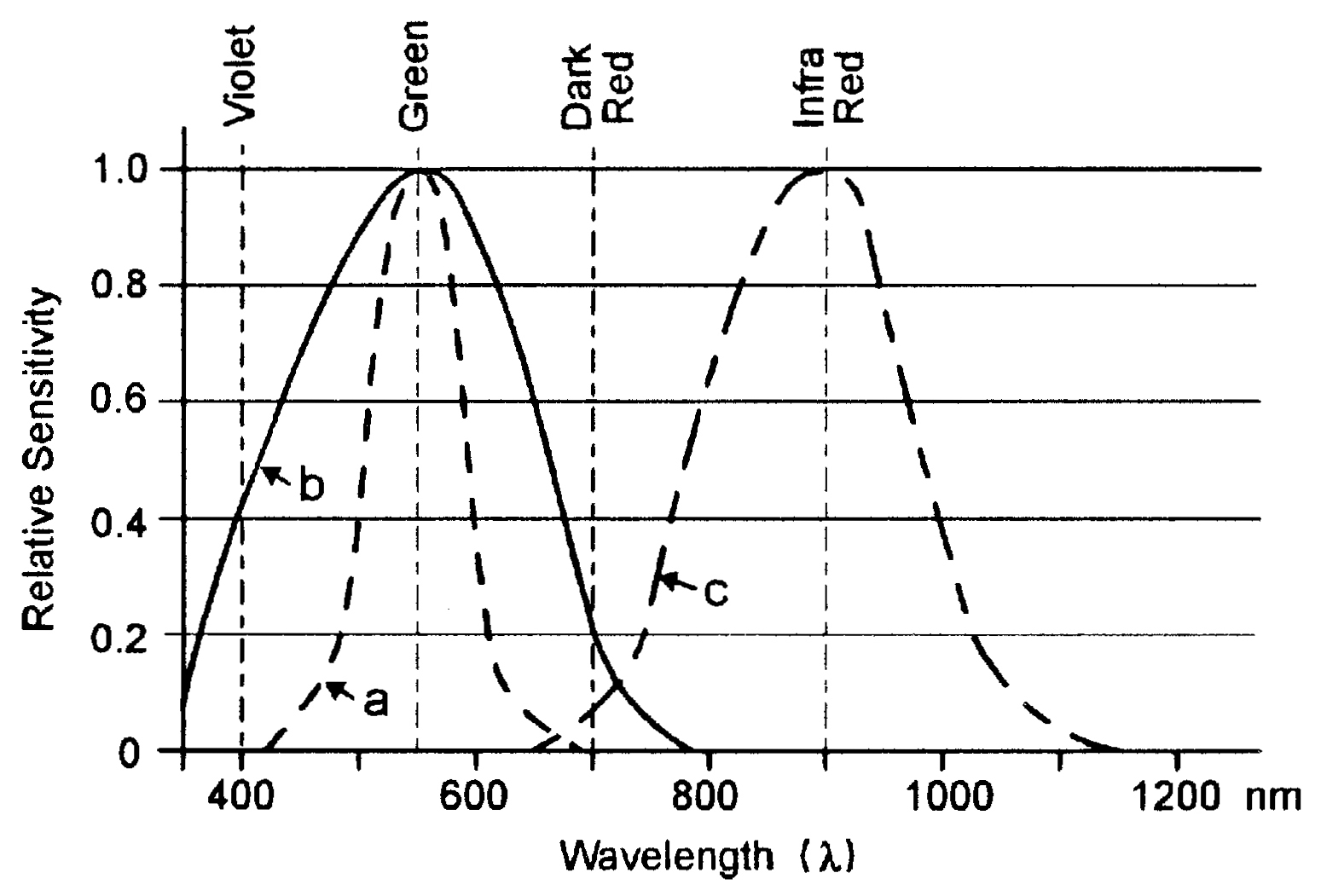
FIGURE 13. Typical spectral response curves of (a) the human eye and (b) general-purpose and (c) IR photodiodes.
Photodiodes can be designed to respond to either visible light or to IR light. The human eye has the type of spectral response curve shown in curve ‘a’ in Figure 13. It has a maximum sensitivity to the color green, which has a wavelength of about 550nm, but has a low sensitivity to violet (400nm) at one end of the spectrum and to dark red (700nm) at the other.
General-purpose visible-light photodiodes have typical spectral response characteristics like those shown in curve ‘b’ in Figure 13, and infrapred (IR) types have the type of response shown in curve ‘c.’
PHOTOTRANSISTORS
Ordinary silicon transistors are made from an npn or pnp sandwich, and thus inherently contain a pair of photosensitive junctions. Some types are available in phototransistor form, and use the standard symbol shown in Figure 14(a).
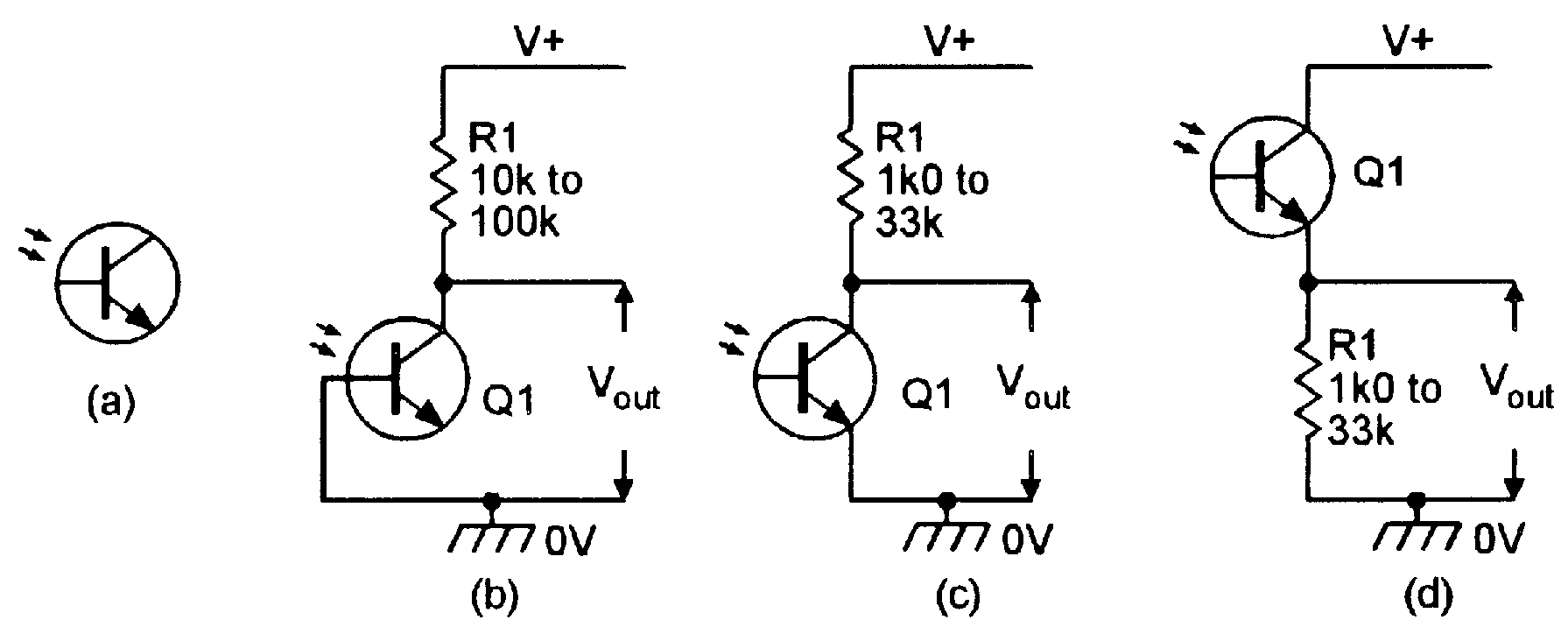
FIGURE 14. Phototransistor symbol (a) and alternative ways (b) to (d) of using a phototransistor.
Figures 14(b) to 14(d) show three basic ways of using a phototransistor; in each case, the base-collector junction is effectively reverse-biased and thus acts as a photodiode.
In (b), the base is grounded, and the transistor acts as a simple photodiode. In (c) and (d), the base terminal is open-circuit and the photo-generated currents effectively feed directly into the base and, by normal transistor action, generate a greatly amplified collector-to-emitter current that produces an output voltage across series resistor R1.
The sensitivity of a phototransistor is typically one hundred times greater than that of a photodiode, but its useful maximum operating frequency (usually a few hundred kHz) is proportionally lower than that of a photodiode.
Most phototransistors are manufactured in two-pin form, with only the device’s collector and emitter made externally available; three-pin types can be used in any of the basic configurations shown in Figure 14. Some phototransistors are made in very-high-gain Darlington form.
Note in the Figure 11 and 14 photodiode and phototransistor circuits that, in practice, the R1 load value is usually chosen on a compromise basis, since the circuit sensitivity increases but the useful operating bandwidth decreases as the R1 value is increased. Also, the R1 value must, in many applications, be chosen to bring the photosensitive device into its linear operating region.
IR PRE-AMP CIRCUITS
Photodiodes or phototransistors are often used as the sensing elements at the receiver end of light-beam alarms, remote control, or fiber optic cable systems. In such applications, the signal reaching the photosensor may vary considerably in strength, and the sensor may be subjected to a great deal of noise in the form of unwanted visible or IR light signals, etc.
To help minimize these problems, the systems are usually operated in the IR range, and the optosensor output is passed to processing circuitry via a low-noise pre-amplifier with a wide dynamic operating range. Figures 15 and 16 show typical examples of such circuits, using photodiode sensors.

FIGURE 15. Selective IR pre-amplifier designed for 30kHz operation.
The Figure 15 circuit is designed to detect an IR optical signal that is switched at a 30kHz rate. Photodiode D1 senses the IR signal and feeds it into 30kHz tuned circuit L1-C1-C2, which is lightly damped by R1. The resulting frequency-selected low-noise output of the tuned circuit is tapped off at the C1-C2 junction and then amplified by Q1.

FIGURE 16. 20kHz selective pre-amp for use in IR lightbeam applications.
Figure 16 shows a 20kHz selective pre-amplifier circuit for use in an IR light-beam alarm application, in which the alarm sounds when the beam is broken. Here, two IR photodiodes are wired in parallel (so that beam signals are lost only when both diode signals are cut off) and share a common 100k load resistor (R1). R1 is shunted by C1 to reject unwanted high-frequency signals, and its output is fed to the x100 op-amp inverting amplifier via C2, which rejects unwanted low-frequency signals.
PIR MOVEMENT-DETECTING SYSTEMS
IR light-beam alarms are active IR units that react to an artificially-generated source of IR radiation. Passive IR (PIR) alarms, on the other hand, react to naturally generated IR radiation such as the heat-generated IR energy radiated by the human body, and are widely used in modern security systems.

FIGURE 17. Basic PIR detector usage circuit.
Most PIR security systems are designed to activate an alarm or floodlight, or open a door or activate some other mechanism, when a human or other large warm-blooded animal moves about within the sensing range of a PIR detector unit, and use a pyroelectric IR detector of the type shown in Figure 17 as their basic IR-sensing element.
The basic Figure 17 pyroelectric IR detector makes use of special ceramic elements that generate electrical charges when subjected to thermal variations or uneven heating.
Modern pyroelectric IR detectors — such as the popular PIS201S and E600STO types — incorporate two small opposite-polarity series-connected ceramic elements of this type, with their combined output buffered via a JFET source-follower, and have the IR input signals focused onto the ceramic elements by a simple filtering lens, as shown in the basic PIR detector usage circuit of Figure 17.
It is important to note at this point that the detector’s final output voltage is proportional to the difference between the output voltages of the two ceramic elements.
The basic action of the Figure 17 PIR detector is such that, when a human body is within the visual field of the pyroelectric elements, part of that body’s radiated IR energy falls on the surfaces of the elements and is converted into small but detectable variations in surface temperature and corresponding variations in the output voltage of each element.
If the human body (or other source of IR radiation) is stationary in front of the detector’s lens under this condition, the two elements generate identical output voltages and the unit’s final ‘difference’ output is thus zero, but if the body is moving while in front of the lens, the two elements generate different output voltages and the unit produces a varying output voltage.
Thus, when the PIR unit is wired as shown in the Figure 17 basic usage circuit, this movement-inspired voltage variation is made externally available via the buffering JFET and DC-blocking capacitor C1 and can — when suitably amplified and filtered — be used to activate an alarm or other mechanism when a human body movement is detected.
In practice, pyro-electric IR detectors of the simple type just described have — because of the small size (usually about 20mm2) and simple design of the detector’s IR-gathering lens — maximum useful detection ranges of roughly one meter. In modern commercial PIR movement detecting security units, however, this range is usually extended to at least 10 meters with the aid of a large (about 2000mm2) multi-faceted external IR-gathering/focusing plastic lens, which splits the visual field into a number of parallel strips and focuses them onto the two sensing areas of the PIR unit.

FIGURE 18. Typical PIR sensing pattern of a commercial ‘intrusion detector’ unit designed for normal domestic-type applications.
Figure 18 shows the typical PIR sensing pattern of a commercial ‘intrusion detector’ unit designed to protect a normal-sized room in domestic-type applications. In this example, the unit is mounted on a wall at a height of seven feet and is aimed downwards at a shallow angle, and the multi-faceted plastic lens splits the visual field into a large number of vertical and horizontal segments.
Any person moving through a single segment will activate a single trigger signal within the PIR sensor; a person moving through the entire visual field thus produces numerous triggering signals, but a stationary IR source produces no signals.
Most intrusion detectors of this type incorporate ‘event counting’ circuitry that will only generate an alarm-activating output if three or more trigger signals are detected within a few seconds, thus minimizing the chances of a false alarm due to sudden changes in temperature caused by the auto-activation of time-switched security lights, etc.
The lens-generated PIR sensor pattern shown in Figure 18 is the type usually used to protect single rooms in domestic burglar-alarm systems.
Alternative lenses offer different ranges and coverage patterns for various special types of application; amongst these are the ‘pet’ type, in which the field’s vertical span is restricted to 2.5 to 6.6 feet above ground level to avoid activation by domestic pets while giving good sensitivity to normal humans, and the ‘corridor’ type, in which the field’s horizontal span is restricted to about 20 degrees to give long-distance coverage (typically about 30 meters) of narrow corridors and passageways.
Note that, because high-quality commercial PIR security units of this basic type are widely available at comparatively low cost, it is not practicable (on aesthetic and cost-effective grounds) to try to build similar units on a DIY basis. NV



















